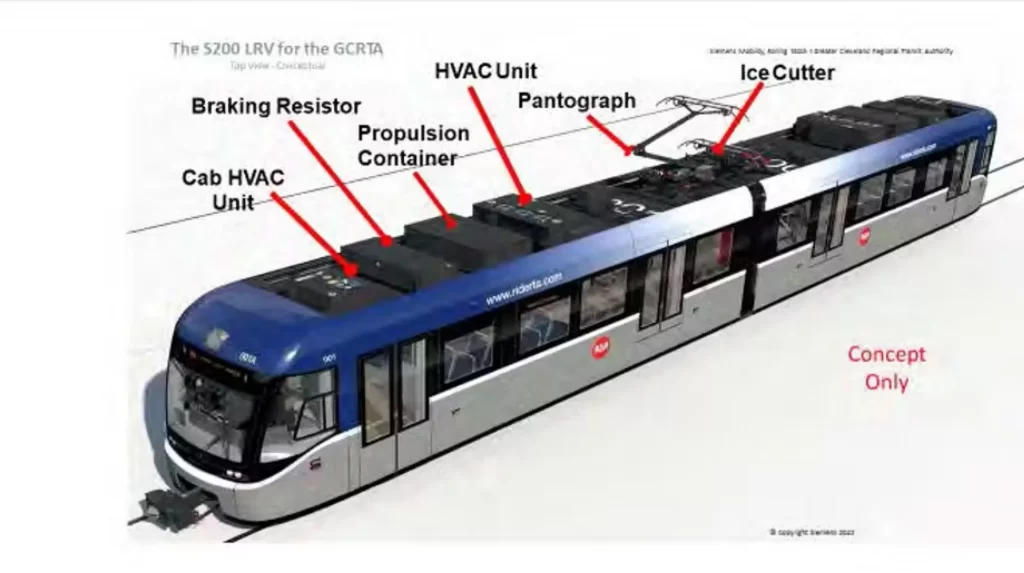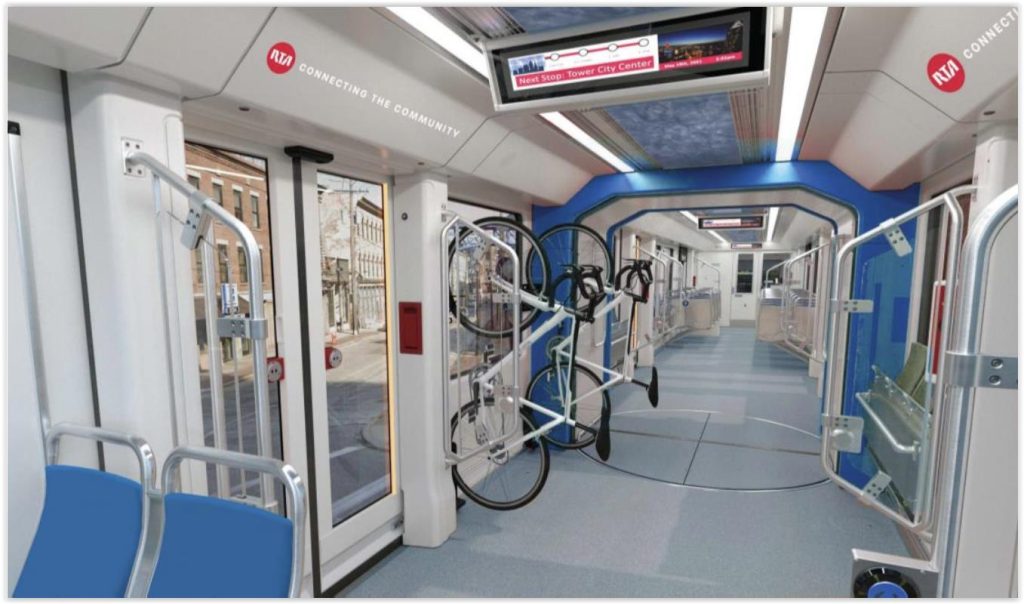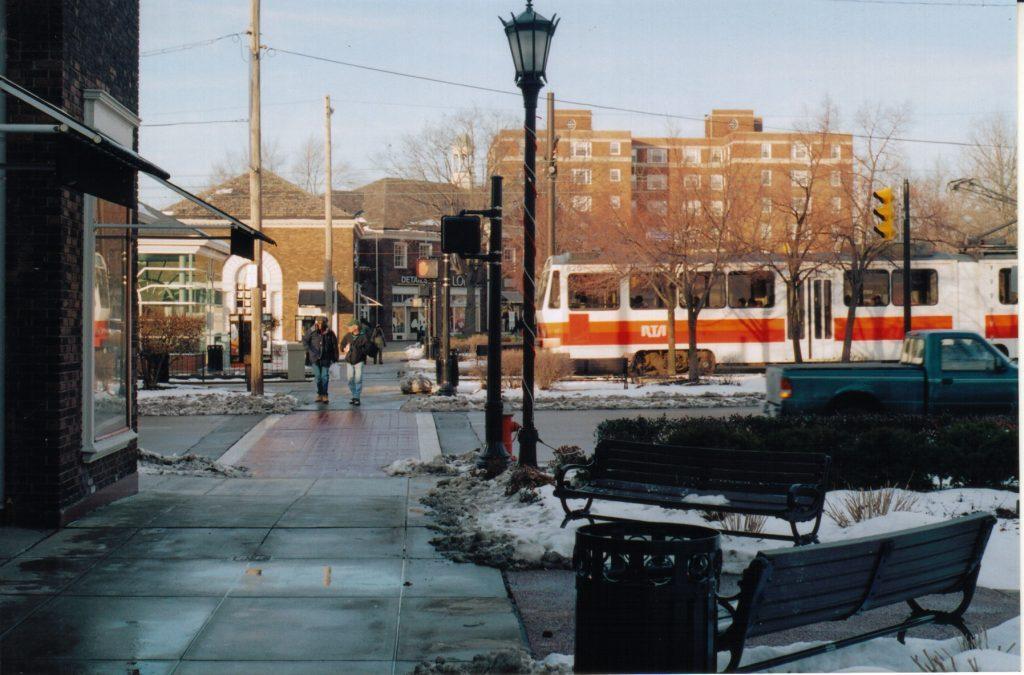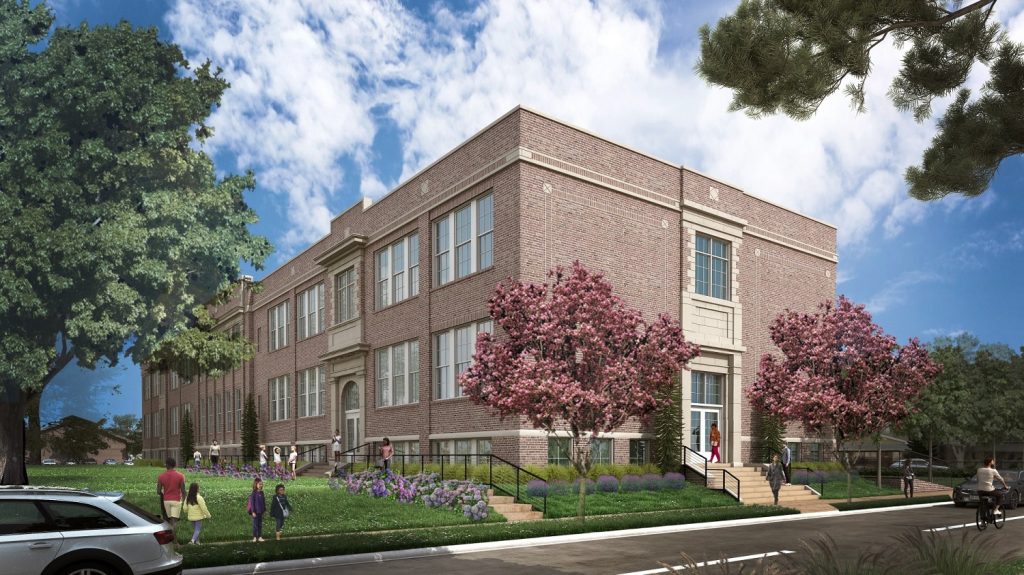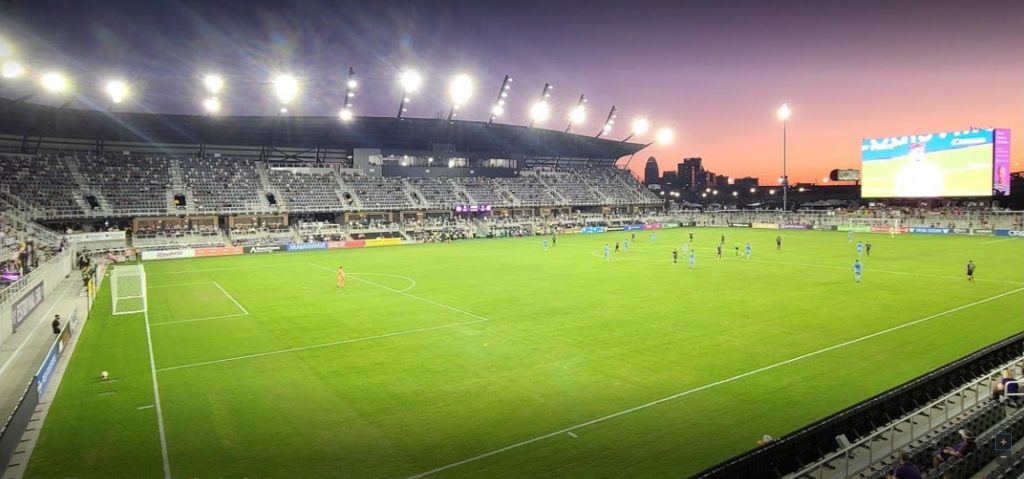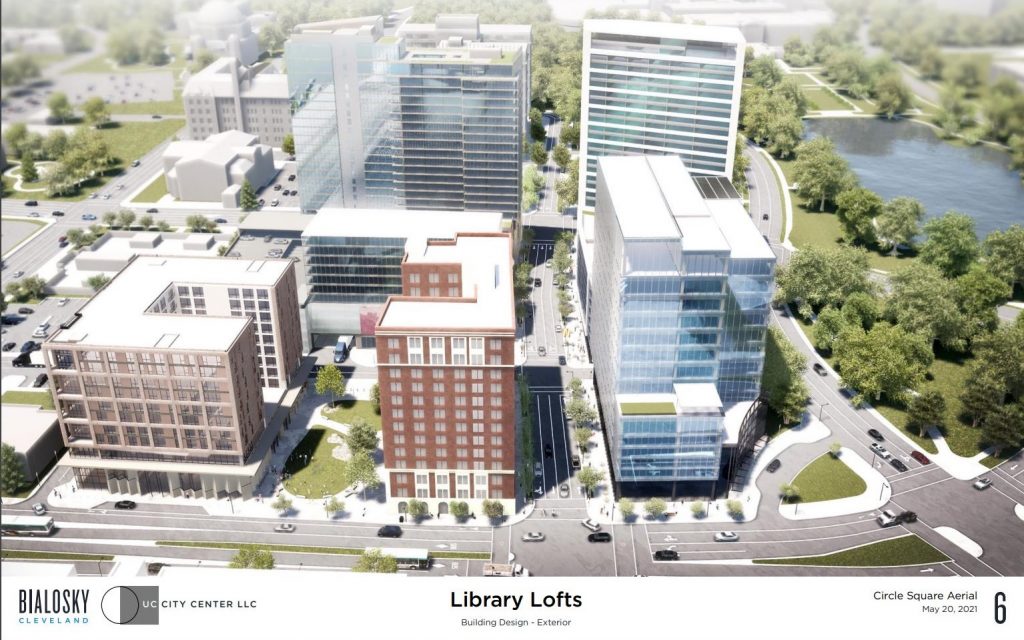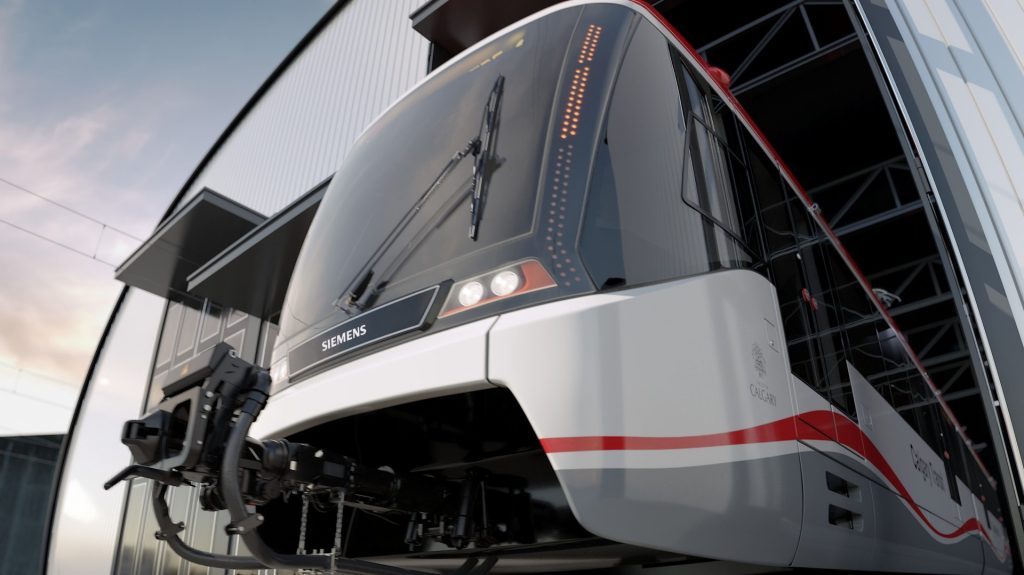
By this time next year, the first of the Greater Cleveland Regional Transit Authority’s new light-rail train cars may be rolling off the assembly line at Siemens Mobility’s assembly line in Sacramento, CA. This was the scene several years ago when the same plant built very similar rail cars to Cleveland’s and were delivered to Calgary, Alberta in Canada (Siemens Mobility). CLICK IMAGES TO ENLARGE THEM.
Final 12 railcars may be ordered by summer
There’s good news and bad news when it comes to the Greater Cleveland Regional Transit Authority’s (GCRTA) new railcar program. And the good news is the result of trying to keep the bad news from getting worse.
The good news is that, by this summer, GCRTA’s board will likely vote on exercising the final option of ordering more light-rail trains from manufacturer Siemens Mobility’s factory in Sacramento, CA. Manufacturing of the trains got underway in October 2024 but the trains won’t be ready to ride in Greater Cleveland until 2027.
The additional 12 trains are projected to cost $72 million and fulfill the entire hoped-for order of 60 railcars, GCRTA staff said at a board committee meeting earlier this week. Having all 60 railcars will allow the transit authority to operate more than just a bare-bones level of rail service. Not only will it be able to offer rail services for major sporting events, concerts and parades, it could offer new services like a Shaker Heights-Airport route that doesn’t force a transfer downtown.
On May 19, the board will be asked to authorize increasing the railcar budget in 2025 from $41.7 million to $113.7 million so staff can pursue the dozen new trains. When the program started, not everyone was confident that funding for the entire order could be secured.
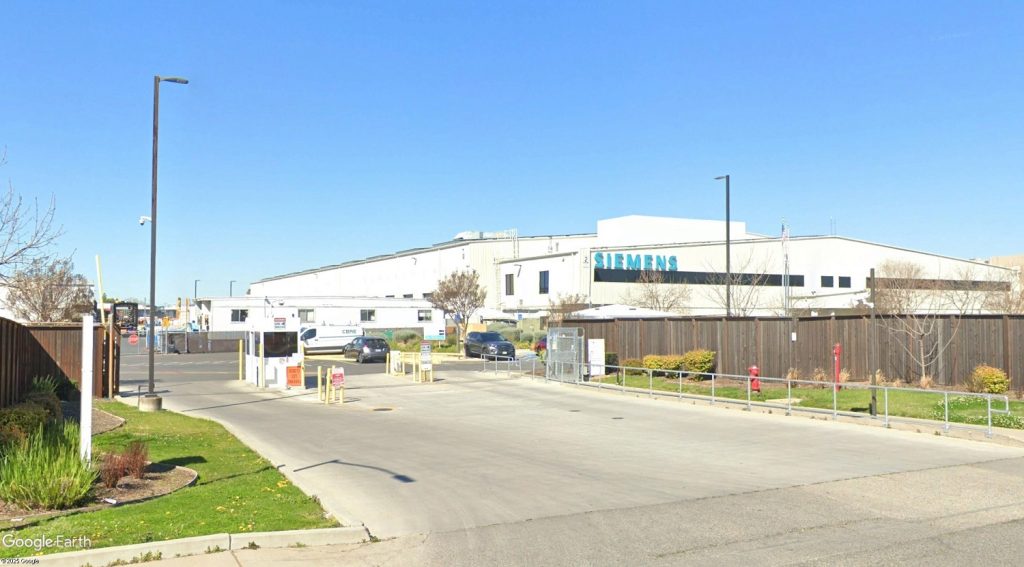
When this streetview was captured in March 2025, Siemens Mobility’s 60-acre plant in Sacramento was already busily manufacturing the first components for the Greater Cleveland Regional Transit Authority’s new trains — along with many other trains for other North American transit authorities and railroads (Google).
Only $33 million more remains to be gathered for the railcars. A state grant was requested in December to fill that void and could be awarded, either in part or in full, in the next month. If GCRTA doesn’t win some or all of the grant, it may issue bonds to fill the unfunded void and place the order now rather than wait until later.
The bad news is why GCRTA doesn’t want to wait. The railcar program is already $57 million over budget and transit authority officials want to keep the overage from growing. To delay exercising the last option in the order would enlarge the funding void for the program, said GCRTA CEO and General Manager India Birdsong Terry.
“We want to be able to move quickly to be able to capitalize on the remaining 12 cars so that we could realize the 60 and move forward with the replacement of everything,” she said. “With all of the inflation going on and all of the changes, we want to make sure that we secure the funding and the amounts that we have within contract.”
“This particular (capital budget) amendment gives us the spending authority for the remaining 12 cars,” added GCRTA Secretary-Treasurer Rajan Gautam. “If we do not exercise that option, there would be some delays in the production line. You may lose your spot in the production cycle may incur some additional penalties which we’re trying to avoid.”
The railcar program’s financial picture was revealed in February during a presentation to a committee of the whole comprised of all GCRTA board members. Originally budgeted at $393 million, the program to replace GCRTA’s 72 aging railcars, not all of which are operable, saw its costs increase in the past year to $450 million.
GCRTA Deputy General Manager of Engineering and Project Management Mike Schipper said the transit agency has $417 million of the railcar replacement program funding in hand or committed.
Railcar funding sources include Cuyahoga County sales tax funding, the Ohio Department of Transportation’s Ohio Transit Partnership Program, plus Federal Transit Administration grants, both competitive and formula. The latter is distributed to transit agencies based on their sizes and populations served.
“So we do understand that we’re not the only ones that are buying railcars in a very competitive market,” Birdsong Terry said. “Sixty cars sounds like a lot to us in Cleveland but it is a drop in the bucket when you are in an international market when you looking at the likes of New York City, LA and Chicago who have hundreds of railcars at some point.”
GCRTA’s trains were built 40 to 45 years ago to operate on two rail systems — the high-platform heavy rail system called the Airport-Windermere Red Line and low-platform light-rail system called the Blue and Green Lines linking Downtown Cleveland’s Waterfront with Shaker Heights.
By retrofitting stations and standardizing the fleet of trains as light-rail vehicles for use on all rail lines, fewer trains are needed to cover assignments and fewer are needed to be held in reserve for maintenance cycling, GCRTA staff said. NEOtrans broke the story in early 2023 that GCRTA would choose Siemens S200 trains, like those recently ordered for Calgary, Alberta, Canada, for its new rail fleet.
Of the railcar budget overage, $24.3 million is attributed to a contingency account in case specific, unexpected costs are encountered. Another $20 million is due to higher costs of manufacturing the railcars. The first 30 railcars cost an average of $5.1 million each. The second 18 trains cost $5.8 million and the last 12 are projected to approach $6 million per car.
A force account to pay GCRTA’s own labor force to carry out portions of this capital project saw its costs rise by $8.7 million, from a $4 million rough estimate to $12.7 million. The GCRTA presentation from February said this amount grew the most percentage-wise because the force account and employee travel plans had not been developed a year ago.
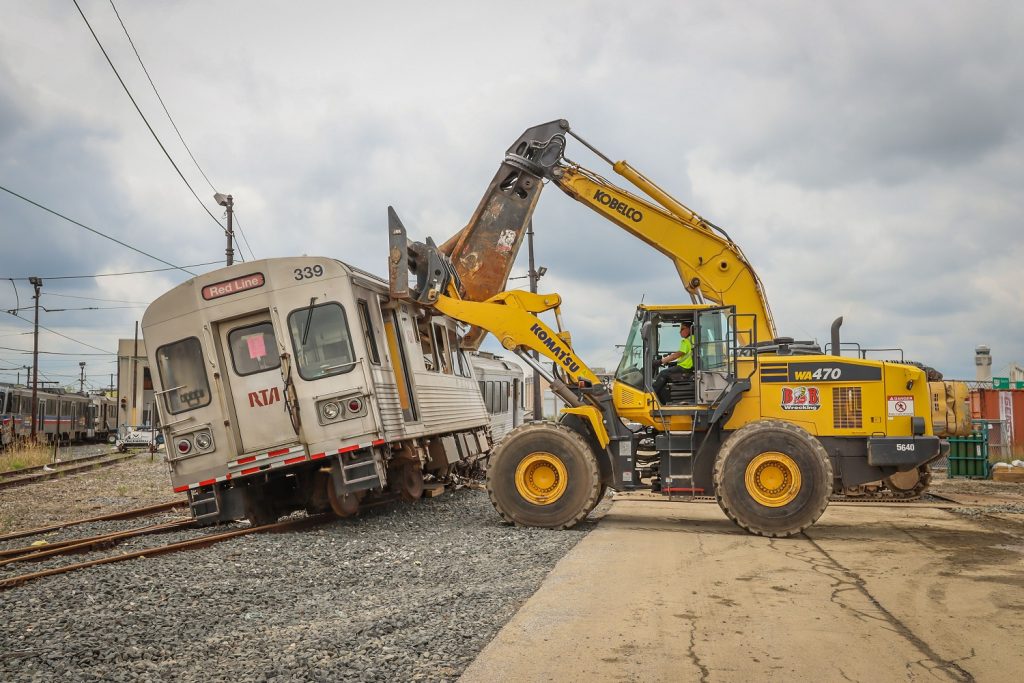
Only several years newer than the light-rail trains on the Blue-Green lines are these heavy-rail cars on the Red Line. More than 30 of GCRTA’s heavy- and light-rail cars have been scavenged for usable parts in the past decade and the rest scrapped due to wear and tear. A row of light-rail trains is seen at far left at the Brookpark Yard, awaiting their turn to be scrapped (GCRTA).
The activity which grew the least percentage-wise was the infrastructure changes needed to accommodate the new trains. This grew from $29.7 million to $33.5 million as four of seven project packages have contractors hired to do them and their amounts are locked in.
The infrastructure amount increased for several reasons. One was because additional work was identified in the Brookpark Yard where the trains and crews will be prepared for regular service. The widening of Red Line platforms for the narrower trains was cost-estimated before an engineering survey was done. And design packages for the infrastructure work were not yet advertised one year ago.
“The inflation on our projects is not across the board,” Schipper said. “It’s more project by project so as we’ve come to the (GCRTA) board, we’ve had projects at or under budget and then we’ve had a number of them at nine or 10 percent over our budget. It’s not consistent so we’re trying to adjust for that. That keeps us from adding more projects to the program. We’re trying to make sure that we have the appropriate funding for the things that are in the program.”
END

